
Xanthan gum is ubiquitous in the world of gluten free baking. For some of us, however, it’s an ingredient that just doesn’t agree with our digestion. As such, I wanted to write a little about substitutes for xanthan gum.
Before we begin, a quick note: I am not a doctor or nutritionist. The purpose of this article is simply to provide information to aid you in your baking. Although xanthan gum doesn’t agree with me personally, I’m not here to demonise it or deny it’s formidable abilities in gluten free baking.
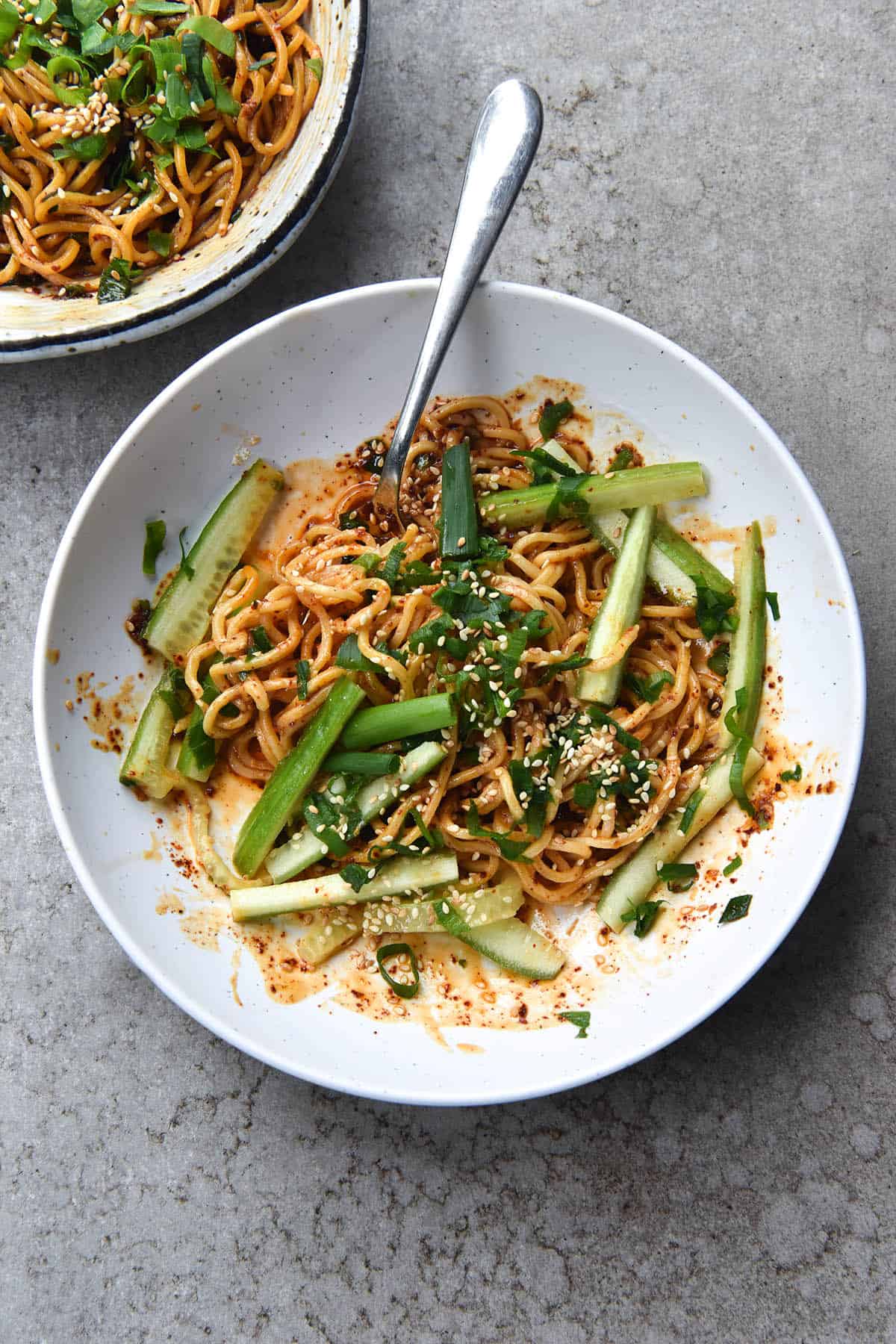
Substitutes for xanthan gum
First off: if you’re here for precise teaspoon measurements on substituting xanthan gum, you will be disappointed. There is so much variety in gluten free baking that it’s impossible to give an exact teaspoon substitute for any given product. I think any website that gives you substitution measurements as a one size fits all is leading you astray.
For example, the substitution amount for a blueberry muffin vs pasta would be very different. I generally find, as we will go into below, that most cakes and muffins can be made without any xanthan gum. Pasta, however, really benefits from the elasticity that allows it to hold together while it cooks in boiling water.
Personally, I think it’s best to think about substituting xanthan gum in three different ways. The first option is to replace the elasticity with a binding ingredient, such as eggs, mashed banana or yoghurt. The second is to add in a different technique (mostly, scalding) which provides elasticity by gelatinising the flour. The third is adding in a substitute, such as psyllium husk powder, guar gum or konjac powder. For the best result possible, it’s always good to think about using at least one, if not two, of these methods at once.
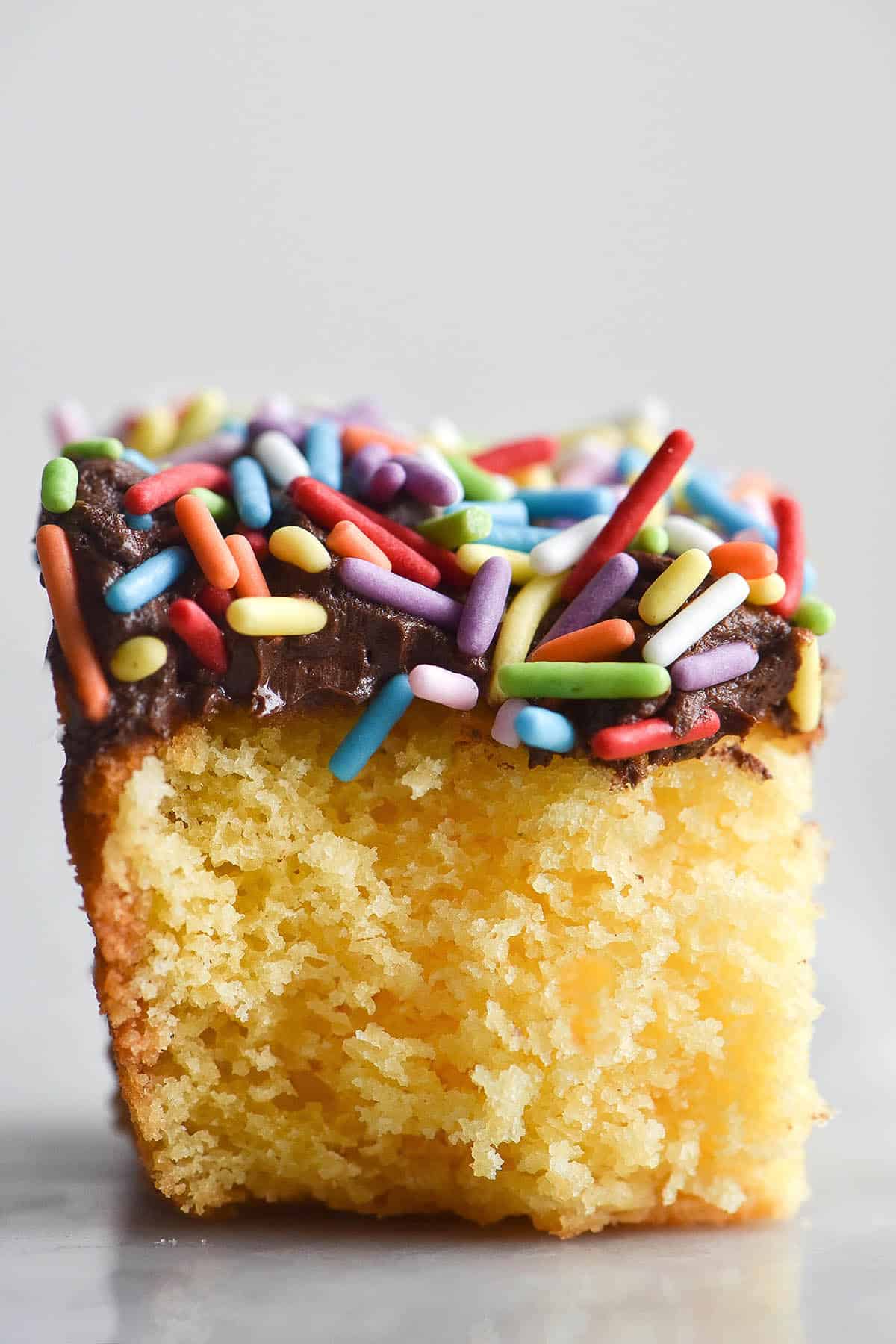
Substituting xanthan gum with binding ingredients
Substituting xanthan gum by replacing it with binding ingredients is a simple but effective method. This method works best with cakes, muffins, and higher fat bakes that don’t need structure (aka: not scones, which need to stay upright without the support of a baking dish).
I find that this method works best with layers of binding ingredients. My upcoming birthday cake recipe, for example, uses butter, oil, eggs and yoghurt. It also uses tapioca flour, which has a bit of elasticity by nature. By layering smaller amounts of these ingredients, sufficient binding and fat is added to your baked good. This results in a product that is moist and tender yet holds it’s shape.
If you’re looking at substituting a recipe, I recommend:
- Substituting some of the wholegrain gluten free flour with a starch. This does not apply to pre-made flour blends, as they already contain loads of starches). My general ratio is 1/2 cup starch to 1 cup wholegrain.
- Replacing half the milk with yoghurt or full fat sour cream. It won’t affect the liquid content, but it will add binding and richness.
- My final trick is to use half oil and half butter (in cakes most often). This combines the best qualities of each fat (butter for flavour, oil for pure fat and a longer lasting baked good).
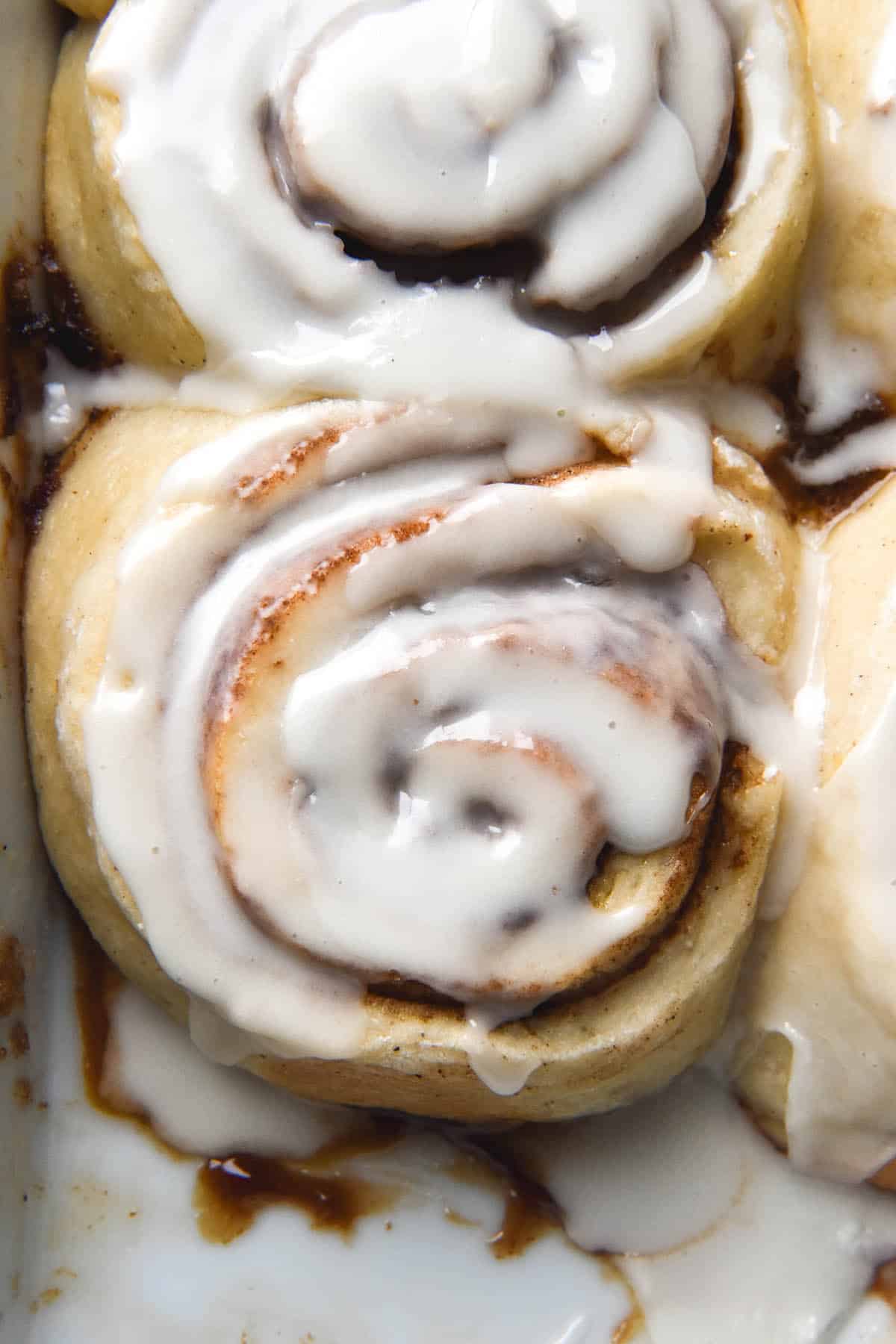
Gluten free binding ingredients that are an alternative to xanthan gum
Binders sounds like a technical and fancy term, but it is very simple. Binders act to hold your baked good together and include ingredients such as:
- Eggs
- Mashed pumpkin or banana
- Psyllium husk or psyllium husk powder
- Chia seeds, flaxseeds or chia/flax meal
- Chocolate
- Yoghurt, cream or thick dairy products
- Starches like tapioca flour, potato starch and glutinous rice flour
- Wholegrain flours with elasticity like buckwheat or cassava flour
- Gluten free sourdough starter (I don’t know how, but it works)
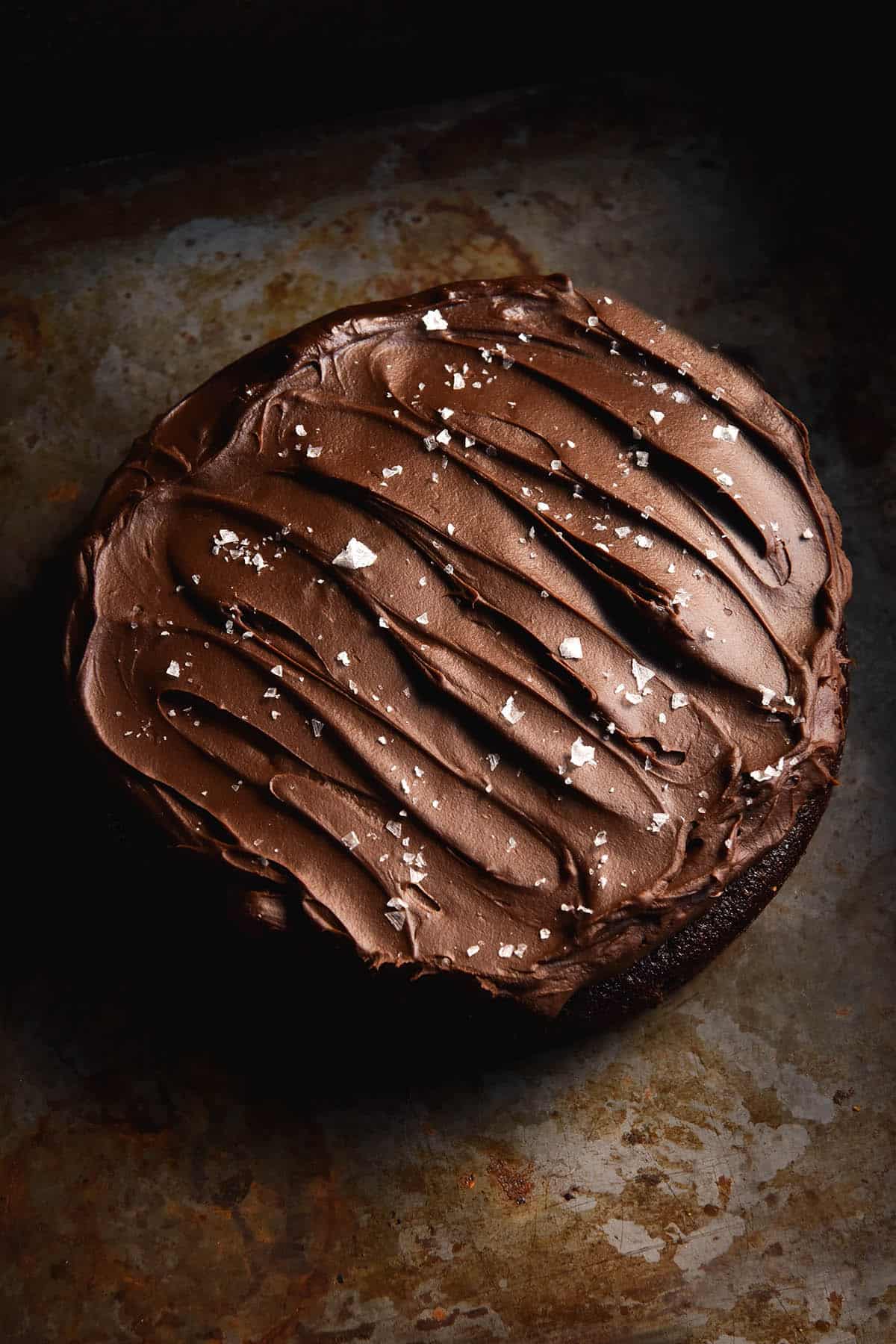
Using a scald to substitute xanthan gum
Scalding flour is the simple process of pouring boiling water into flour. The water gelatinises the starches in the flour and makes them more elastic. It’s not suitable for every recipe but it excels in things like gluten free dumpling wrappers (recipe in Intolerance Friendly Kitchen) and these grain free tortillas.
Scalding can also be used in bread recipes. Here, it is advisable to scald a smaller portion of flour and work it into the main dough. This is in part because boiling water would kill the yeast. An example of incorporating a scald into dough is my gluten free cinnamon rolls.
Scalding is best when combined with some psyllium husk. Not only does this add some extra elasticity, but it is also very absorbent which allows you to add more water. Gluten free baked goods are drier than regular ones, so this enables you to create a lovely and moist baked goods.

Using powders as an alternative to xanthan gum
There are a few different options when it comes to replacing xanthan gum with another powder. None of them are foolproof, and they all depend on what sort of baked good you’re making. However, the following is a good place to start. I haven’t tried all of these, but I will update the post as I do.
- Konjac powder – general consensus seems to be adding 1-2 teaspoons konjac powder to replace 1 teaspoon xanthan gum. So, you might need slightly more konjac when compared to xanthan gum.
- Guar gum – by all accounts, guar gum is roughly a 1:1 substitution. My research suggests that some people say you might need a little extra guar gum.
- Agar agar or gelatin – although I haven’t tried this, a number of websites suggest these powders are suitable substitutes. I will update the post when I test these in my baking. Keep in mind that both agar agar and gelatin need to be prepared prior to use.
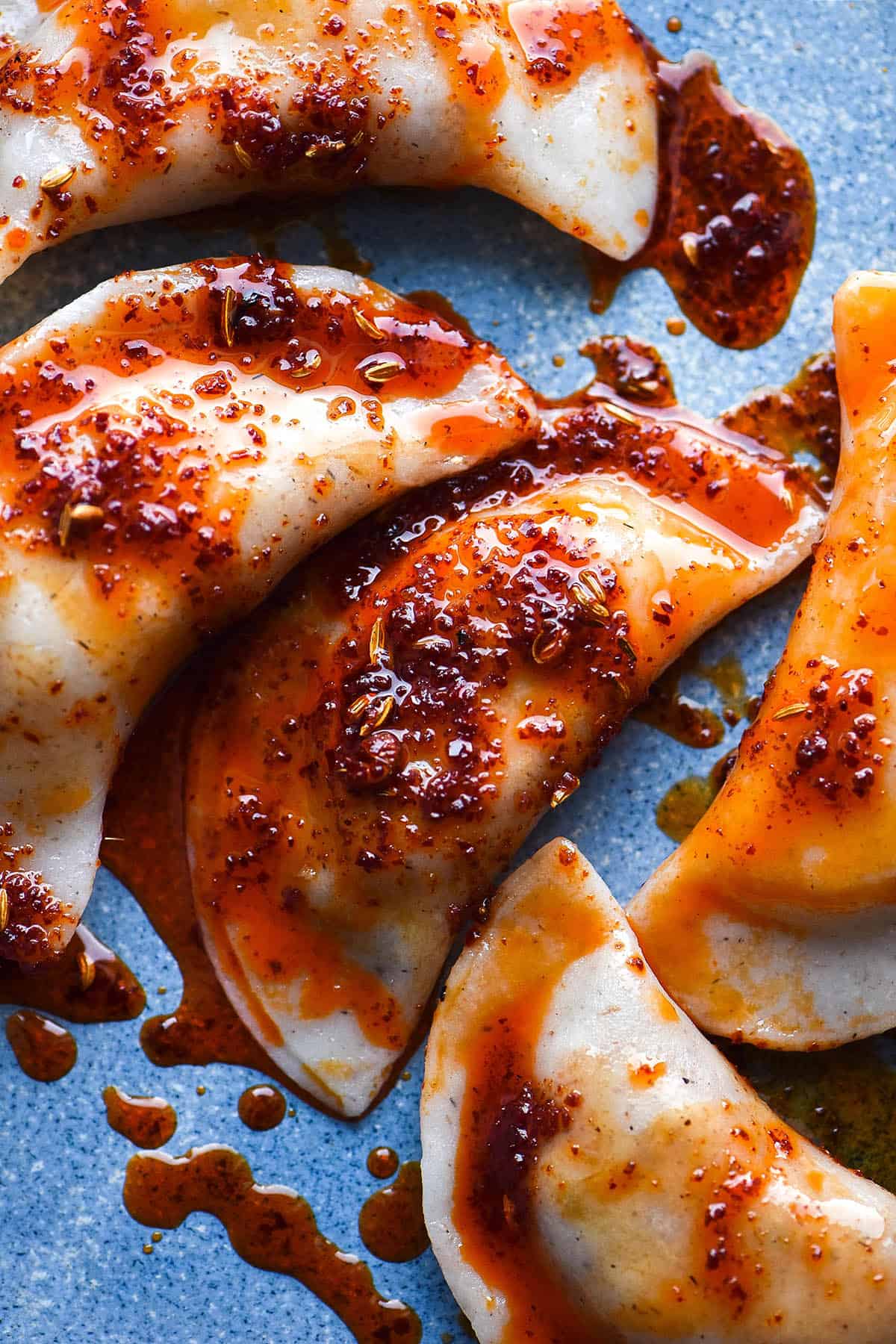
Which substitute should I use for which baked good?
- Extra binding ingredients – best for cakes and muffins
- Psyllium husk and psyllium husk powder – best for breads
- Guar gum or konjac powder – noodles and laminated baked goods like croissants
Additional resources
- This article from Bob’s Red Mill discusses the differences between guar gum and xanthan gum and has a rough guide for substituting.
- I have previously written on xanthan gum and gluten free baking.
- My guide to low FODMAP baking
- Gluten free cake recipes that use binders instead of xanthan gum

Thank you for your thorough review of subtitutes for xanthin gum.
What can be used to bind together a crumb type crust. ie., I have a recipe for a ground nut crust that does not hold together well with gluten free flour.
Hi Linda! Do you have a link to the recipe in question? Generally nut crusts (if made entirely from, for example, almond meal/flour) are a bit crumbly. I generally like to use a starch with them to give them a bit of binding capacity. Often they need to be pressed into a tart tin extremely firmly to force them to hold together as well.
With that said, it’s hard to say what to suggest without knowing exactly what the recipe entails and what you are using it for.
If you can give me a bit more information I’d be happy to try and help 🙂